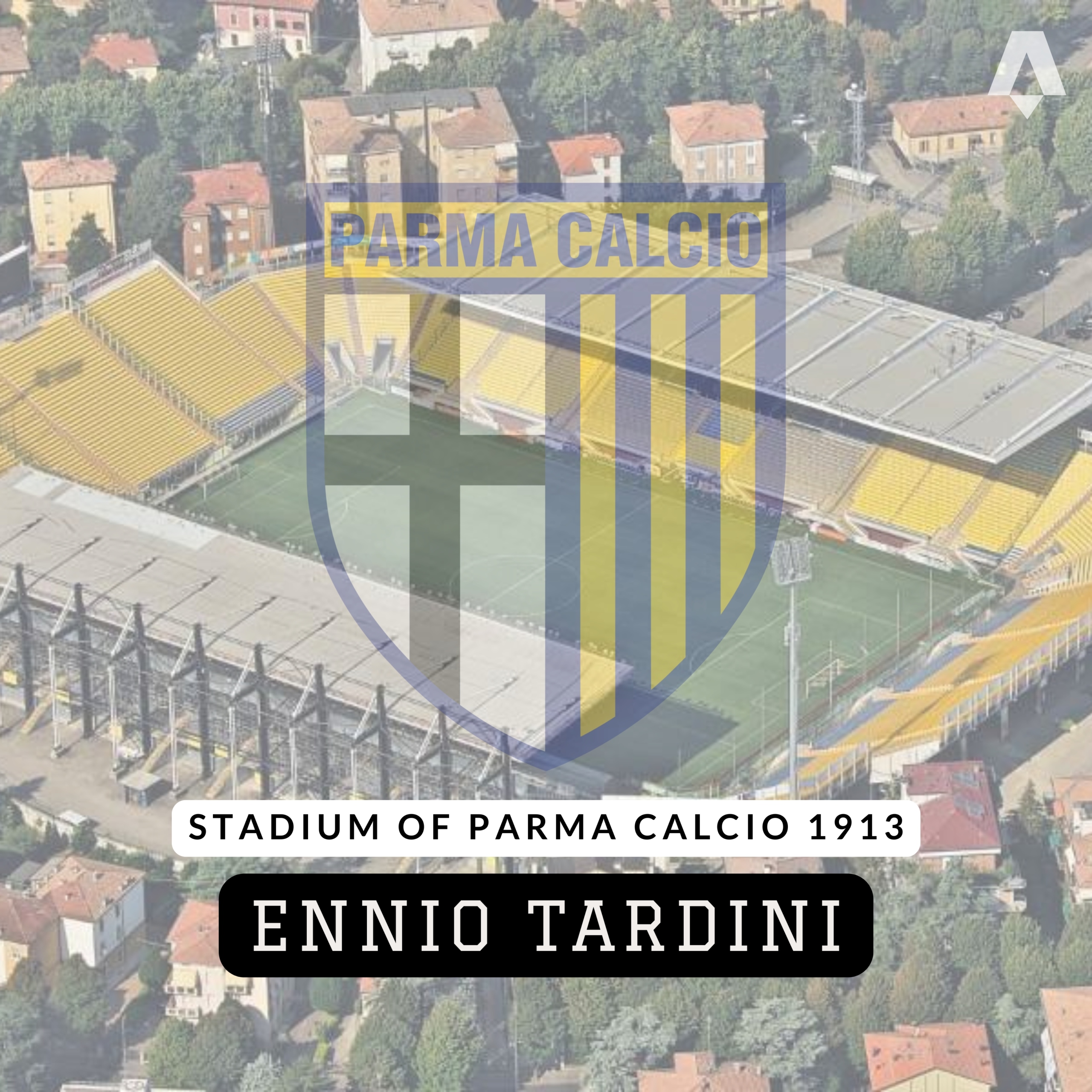Name: Stadio Ennio Tardini
City: Parma
Region: Emilia-Romagna
Address: Viale Partigiani d’Italia, 1, 43123 Parma
Coordinates:
- Latitude: 44°47′41.7″N
- Longitude: 10°20′18.4″E
Build: 1923
Renovations: 1990-1993
Capacity: 22,352
Pitch Size: 105 m x 68 m
Home teams in Serie A: Parma Calcio 1913
UEFA Category: –
Owner: Municipality of Parma
The origins of the iconic Stadio Tardini:
Ennio Tardini, after whom the ground is named, had a strong desire for the construction of the stadium but sadly was unable to witness its completion and see the official opening on 16 September 1924 due to his passing away the year before.
One of the founding members of Parma Football Club (16 December 1913) and its President from 1921 to 1923, the humanitarian lawyer from Parma contributed to realizing many other key construction projects for the city; he was a simple and stylish man and tried to avoid being in the limelight. Following a 2-0 derby win over Reggiana at the old ground on the Stradone – a city center boulevard – on Boxing Day 1922, Tardini didn’t even take part in the ceremony to celebrate the first brick being laid as he wanted to wait for the final multi-sports complex to be in place. Including a cycling track and a gym for Gymnastics, the ground was designed to host many other sporting activities, such as cycling, athletics and rugby union. As such, it is no surprise to learn that the original name of Parma included ‘multi-sports’ in it.
For the last 40 years, it has been mainly used for football, although on some occasions it has staged other sporting events. Over time, the stadium has undergone specific changes and transformation, including the removal of the cycling track and the construction of a covered grandstand (the main ‘Petitot-Ovest’ Stand), as well as the opposite ‘Est’ Stand and the ‘Nord’ and ‘Sud’ Stands behind the goals.
Owned by the city council and run in accordance with Parma Calcio 1913, the Stadio Tardini, with a capacity of 23,324 seats, is one of the oldest and most charming stadiums in Italy.
Its appeal lies in its monumental Liberty-style entrance gate and, especially, the close proximity of the stands to the pitch and its location near the city center. Its central urban location in Parma is a beneficial and important characteristic in the continuation of customs and traditions for the Club’s supporters.


